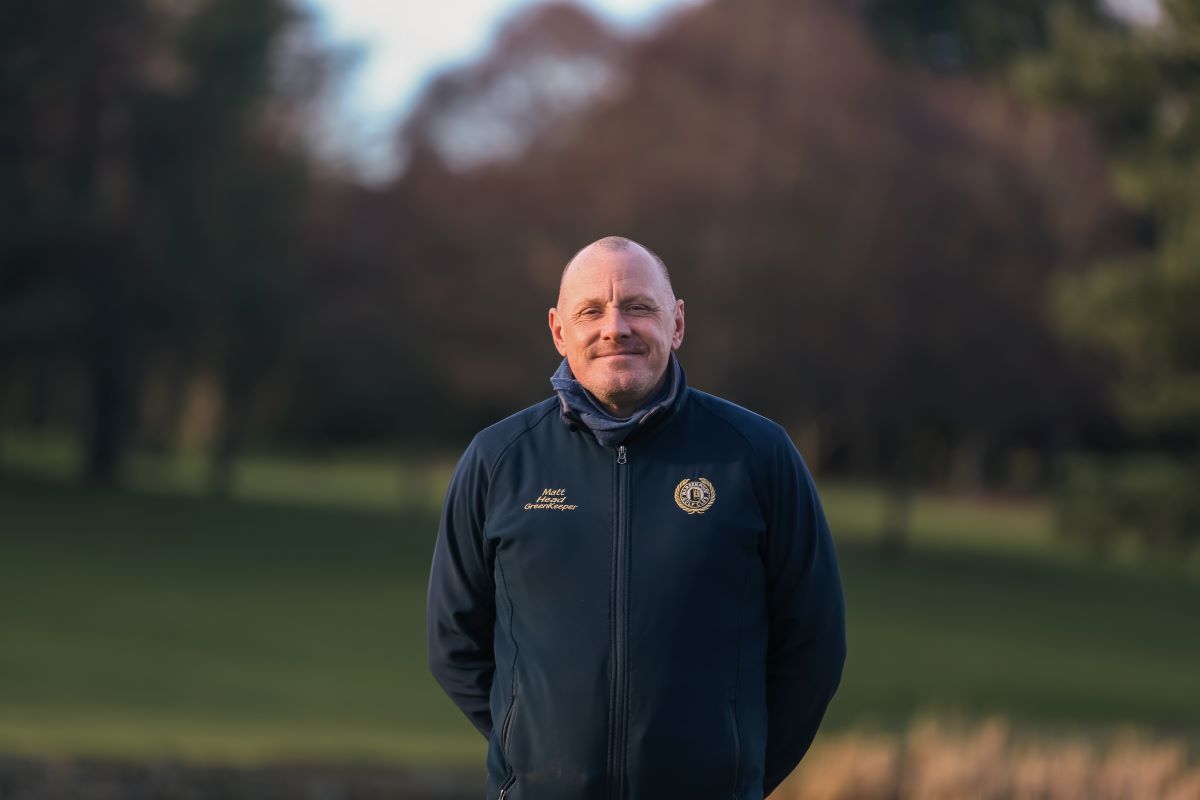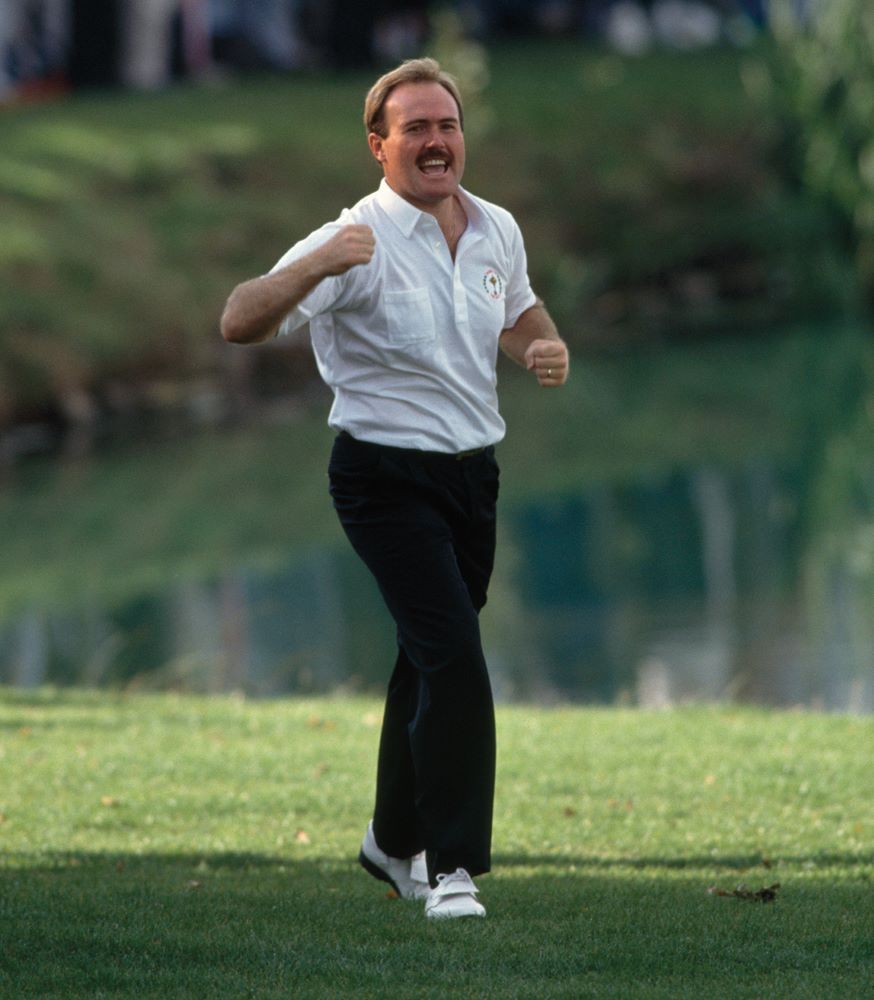- Homepage
- News and Features
- Matt Purcell breathes new life into Warrenpoint
Matt Purcell breathes new life into Warrenpoint
Warrenpoint in Northern Ireland is roughly halfway between Belfast in the north and Dublin to the south and it has a reputation for producing some fine golfers. In recent years, it was felt the course had become “unloved” by its own high standards. Recently appointed head greenkeeper Matt Purcell, a good player in his own right, is the man charged with tackling the recovery after making the move from England.
As he comes to terms with his task, he can at least count on the benefits of owning in-house aeration machinery.

Talk us through your career so far
I had always played golf to a good standard and I started off raking bunkers at local courses. I realised greenkeeping could be a career and I wanted to see how far I could get in the industry.
My break came at the Forest of Arden and I could see the differences in preparation and finishing – it was a cut above. My boss was Rob Rowson, who is a brilliant course manager. He’s not all over social media, he just gets on with it and I learned so much from him.
When I thought about my next stop, I looked around England, but there wasn’t much that interested me. I’ve never feared relocating – I try and push myself to live outside my comfort zone. So, I looked further afield and Northern Ireland came calling.
I went to Bangor as deputy head greenkeeper, but the role wasn’t quite what I was after. I wanted my own input and to be able to work without constantly seeking approval.
As luck would have it, I was then approached by Warrenpoint.
What attracted you to Warrenpoint?
I investigated the club’s history and I’d advise anyone to do a little bit of checking into the background of a club before joining. I learned about Warrenpoint’s reputation for producing excellent golfers like Ronan Rafferty, Paddy Gribben and now Colly Campbell Jr, who won the Irish Amateur again last year.
I don’t think it’s unkind to say it was perhaps a little unloved, but I knew it just needed a bit of TLC and a new vision and, having a walk around the golf course, I could see we could make this golf course great again. Finally, you can’t beat those views!

Where was the course at when you arrived?
It felt like it had lost its way. I’m not pointing any fingers as clubs can lose staff, things don’t always go to plan and Covid didn’t help. I could see what could be achieved and you don’t always need 20 staff – you can still create a great golf course with the right people.
There’s five of us here – four full-time and one part-time. My deputy, Liam, who’s been here for about 20 years, Sam, Andrew and Paul.
Whether five staff or 25, if your preparation and work ethic are correct and you’ve got a good team, then I believe you can present a great golf course.
What were the specific challenges you faced?
Unfortunately, several greens had suffered, so I prioritised getting them back to health, with good sward coverage, so they were always playable. I was brought up that if you look after good greens, you shouldn’t need temporary greens, but they were in use here.
I arrived at the end of September 2021, so it was a case of getting through winter, and now I’ve had a whole year to deliver my plans.
I could tell from soil samples we needed to get air into the greens, so we did a massive aeration and greens renovation programme last spring. It was a struggle – we had to put it back a few times due to the weather – but that came good in the end.
We carried out a big renovation – overseeding, aeration, lots of topdressing and, touch wood, the members are happy. They saw what we were trying to achieve, so last year was good, but you can’t rest on your laurels and this year will be even better.
We’ve started already and we’ve done plenty of aeration through the winter, so we’re in a good place.
Did you ask for any additional resources to tackle the renovation?
I asked for some resources to help with that greens programme. Other clubs our size might outsource their aeration but the problem with that is you are reliant on someone else. You can only plan certain programmes because it’s a cost to the club.
Historically, a machine was hired in at certain times that we would have to stick to, even though the conditions might not be right. That’s restrictive and you’re often playing catch up. Therefore, I asked the club to purchase a Redexim aerator so we could aerate every four weeks.
Aerating more regularly allows us to be less invasive. If you’re hollowcoring with hired equipment, you might only do that once a year so you will have to make the most of that, with longer recovery. We can go little and often and, with a gentle topdressing, we’re good to go all the time.
We see a lot of golf, so we must keep pushing those greens along, because the minute you start standing still, that’s when your greens start going backwards and you’re fighting against them.
Often you wouldn’t even know there’s holes in our greens – we just keep ticking over – and then, in summer when we have a lot more traffic, our greens will be ready and it’ll just be a case of fine tuning them when we have some warmth in the plant.
How do you manage your communications with the members?
I don’t necessarily want to have a full-blown conversation with them out on the golf course but I’m approachable and they can always come up to me and discuss things.
I do a monthly newsletter and I encourage them to reply. It’s not all about ‘I’m going to do this’ as it’s their club and we’re rebuilding the course together.
Then it’s as simple as chatting to members in the clubhouse and getting their feedback. Together we’ll get this golf club back to where it belongs.
What’s your overall greenkeeping ethos?
Presentation is massively important and you don’t need a huge team. Of course, extra manpower lets you get more done, but that also brings problems because you must manage and watch more.
I take pride when it comes to presentation. I always want to look back at a completed job and know that it has been done as well as possible. Members pay their fees, and they want a good, finished product. If someone isn’t sure about something, I’m the sort of person to show them how I would do it. Equally, my team are welcome to bring their ideas to me as well. They’re not just taking orders and they have a say in things. I’m fully hands on and I wouldn’t change, even with 20 staff. I was looking after a team of 18 at the Forest, but I was still hands on. I wouldn’t ask anybody to go out in the tipping rain if I wasn’t prepared to do it myself. Even though there’s a side of you that’s ‘management’ and you’ve got a budget to control and bosses to answer to, I think you can still be part of the team.

How do you approach managing a course like Warrenpoint?
Everything comes back to presentation.
First impressions last and it’s about getting the little things right.
For example, we put some new directional signage on the course and instead of shoving a little metal sign in, we installed some engraved sleepers, which look great.
At a championship venue, of course you must step it up a bit, but Rob Rowson’s ethos was exactly the same – presentation, presentation, presentation. Anyone can pinch ideas from golf clubs like that and bring them to their own course.
That signage raised the bar as people here hadn’t seen that before.
We’re also going to install some more topiary WGC initials on the bank behind the first green, which people can see from the road as they drive past, which will look fantastic and raise the bar again.
We might only have five staff, but if everybody is singing off the same hymn sheet, then we won’t go far wrong.
How have you found working in Northern Ireland?
The weather is obviously a fundamental difference. I see all my friends over in England planning for spring and last March we were ready too. But then we had 150mm of rain and we had to put everything on hold.
Then we had 350mm rain from November to mid-January and I think over here you just have to be prepared to think on your feet a little bit more and to act quickly when you have to.
That brings us back to getting our own machines in, so we can go to work straightaway when conditions are right.
We’re often a little bit behind in temperatures as well, but I think that’s why we love the job and why we do it – it makes you think. Then, when the nice weather comes along, it makes the long days and sleepless nights worth it!
Are you seeing any specific challenges in greenkeeping currently?
I’d love to see greenkeeping talked more about in schools as a career option.
There’s a lot of young people who play golf – participation is up – but I don’t think people know how to get into the industry, so we need to open doors so we attract people.
Pay is still a problem. Inflation is soaring but many clubs want to pay minimum wage.
We’re lucky here as conditions are good. I’m salaried, but the rest of the lads are on an hourly rate and get paid for weekends.
I’d say some clubs elsewhere in the UK are not as good and perhaps we need to sit down as an industry and set pay across the board.
Finally, going back to the challenges of the weather, I think as greenkeepers we’ve all got to change our approaches, because if you spoke about the impact of climate change on golf 15 years ago, everybody would just be laughing at you, saying it’s just a bit of rain.
But winters are getting wetter, which causes problems because you can’t get machines out, so you can’t cut anything and you are just waiting for the course to dry out.
It makes you think what programmes you can do and when you can do them.
Author

